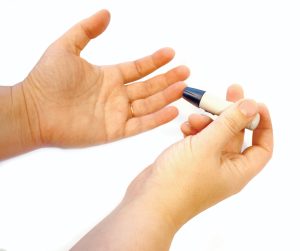 A previous article in this blog discussed the potential impact of hypoglycemia (low blood sugar) on an investigation for DUI (called ‘OVI’ in Ohio). Hypoglycemia is not the only blood sugar condition which may affect an OVI investigation. Hyperglycemia (high blood sugar) may also cause symptoms which overlap with the symptoms of alcohol intoxication. In addition, hyperglycemia may inflate the results of a breath alcohol test.
A previous article in this blog discussed the potential impact of hypoglycemia (low blood sugar) on an investigation for DUI (called ‘OVI’ in Ohio). Hypoglycemia is not the only blood sugar condition which may affect an OVI investigation. Hyperglycemia (high blood sugar) may also cause symptoms which overlap with the symptoms of alcohol intoxication. In addition, hyperglycemia may inflate the results of a breath alcohol test.
What is Hyperglycemia
Hyperglycemia is, simply, a high level of blood sugar (glucose). For non-diabetics, normal blood sugar levels are less than 100 mg/dL when fasting for at least eight hours and less than 140 mg/dL two hours after eating. For diabetics, normal blood sugar levels are less than 100 mg/dL when fasting for at least eight hours and less than 180 mg/dL two hours after eating. Blood sugar levels above those listed are considered hypoglycemic.
Hyperglycemia May Present as Alcohol Intoxication
According to the Mayo Clinic, when blood sugar levels are above 180-200 mg/dL, the symptoms include frequent urination, increased thirst, blurred vision, and feeling weak. If hyperglycemia causes ketones to build up in the blood and urine, additional symptoms include fruity-smelling breath, dry mouth, confusion, and loss of consciousness.
Law enforcement officers are trained to detect evidence of alcohol intoxication. The training is based on the NHTSA manual DWI Detection and Standardized Field Sobriety Testing. According to that manual, symptoms of alcohol intoxication include impaired vision, loss of balance, odor of alcohol, slurred speech, slowed reaction time, reduced concentration, slow thinking, impaired reasoning.
The symptoms exhibited by a hyperglycemic driver may be interpreted by an officer as symptoms of alcohol intoxication: blurred vision (impaired vision) feeling weak (loss of balance), fruity-smelling breath (odor of alcohol), dry mouth (slurred speech), and confusion (slowed reaction time, reduced concentration, slow thinking, and impaired reasoning).
Hyperglycemia May Inflate Breath Test Results
Hyperglycemia is caused when a person’s body does not effectively metabolize glucose and the glucose builds-up in the person’s blood. The extra glucose in the person’s blood is supposed to be delivered to body parts to be used as energy. When glucose remains in blood and cannot be used for energy, the body breaks-down fats to be used as energy. This creates acidic waste products called ketones. Ketones are expelled from the body in multiple ways, including breath exhalation.
The breath-testing machines used in Ohio use infrared energy to measure the concentration of ethanol in a breath sample. The amount of infrared energy produced by the energy source (infrared light) at the beginning of the breath sample chamber is constant. The amount of infrared energy which reaches the detector at the end of the breath sample chamber is measured. The amount of infrared energy absorbed during the test is attributed to ethanol because ethanol absorbs infrared energy at certain wavelengths.
Like ethanol, ketones absorb infrared energy at certain wavelengths. When a person in a state of hyperglycemia takes a breath alcohol test, the ketones in that person’s breath absorb infrared energy, and this absorption may be attributed to ethanol. In theory, breath-testing machines are designed to differentiate between ethanol and interfering substances like ketones. In practice, the machines do not always exclude ketones and other interfering substances from the reported breath alcohol concentration. Accordingly, the breath test result may be falsely elevated by the ketones.
Hyperglycemia May Be a Defense to OVI
If a law enforcement officer stops a driver who is hyperglycemic, the officer may mistake symptoms of high blood sugar for symptoms of alcohol intoxication. If the driver provides a breath sample, the breath-testing machine may mistake ketones for alcohol. A hyperglycemic driver charged with OVI may have a medical defense to both OVI ‘impaired’ and OVI ‘per se’.
 Columbus OVI/DUI Attorney Blog
Columbus OVI/DUI Attorney Blog

